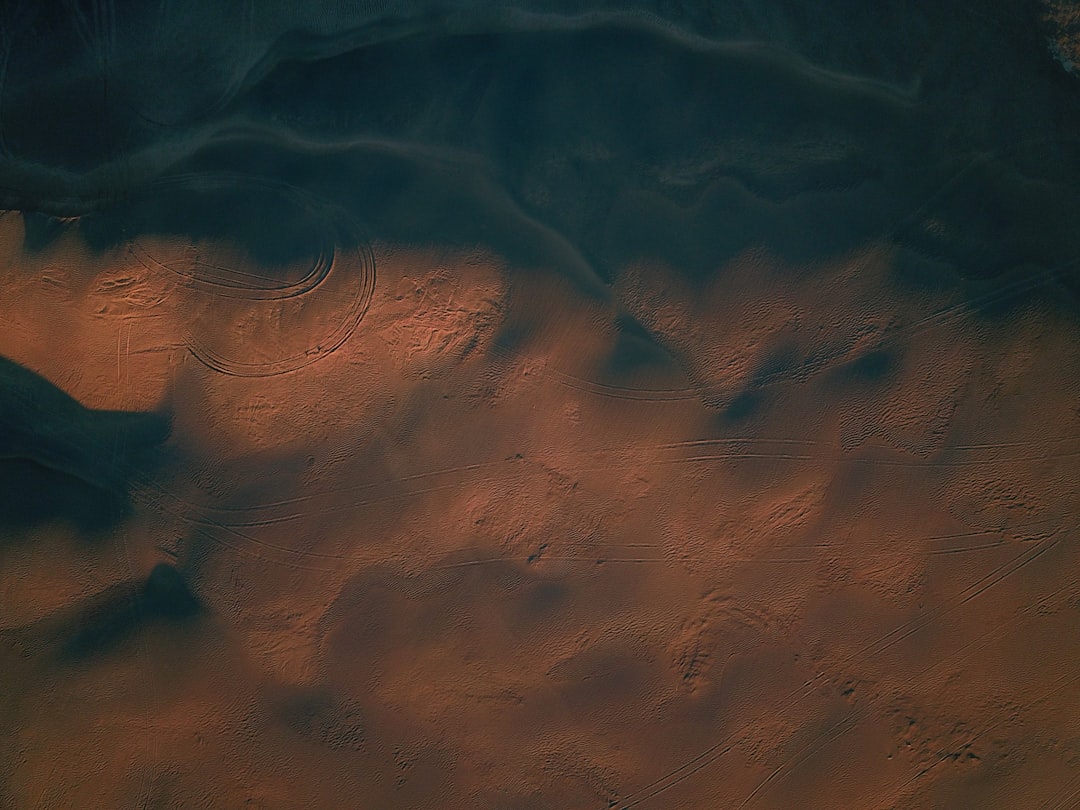The latest images transmitted from the Martian surface and its orbit represent more than just breathtaking cosmic photography; they are the culmination of an unprecedented scientific and engineering endeavor. Missions like the Perseverance rover and the James Webb Space Telescope (JWST) are peeling back the layers of the Red Planet, revealing its secrets with stunning clarity. But behind each panorama of desolate craters and each spectral analysis of the thin atmosphere lies a story of immense technical persistence. This process is akin to the most complex software debugging challenge ever undertaken, where scientists and engineers methodically identify, analyze, and solve planetary-scale mysteries, one data point at a time.
These new photos are the output of a sophisticated system, a network of hardware and software operating millions of miles from home. Every rock formation that defies geological models, every unexpected chemical signature in the atmosphere, is a “bug” in our understanding of Mars. To solve these puzzles, teams at NASA and ESA employ a rigorous methodology that mirrors the world of full stack debugging. They are not just looking at the surface (the “frontend”) but also probing the atmosphere and subsurface (the “backend”), all while managing the intricate data pipeline that connects them. This article delves into these stunning new visuals, exploring not only what they show us about Mars but also the incredible debugging techniques used to capture and interpret them.
A New Era of Planetary Investigation
The current exploration of Mars is characterized by a multi-pronged approach. On the ground, the Perseverance rover acts as a geologist and astrobiologist, while from afar, the JWST provides a macro view, analyzing the planet as a whole system. This collaborative effort allows for a comprehensive form of system debugging, where ground-truth data from the rover can be correlated with large-scale atmospheric and thermal data from the telescope. The goal is to debug the entire history of Mars—to understand how it transformed from a potentially habitable world with liquid water into the cold, arid desert we see today.
The Ultimate Debugging Challenge: Finding Life’s Traces
The primary mission for Perseverance is to search for signs of ancient microbial life. This is the ultimate bug fixing quest. The “bug” is the missing piece of the puzzle: did life ever exist on Mars? Scientists aren’t looking for a single “error message”; instead, they are analyzing subtle clues in the rock record, much like a developer sifts through logs to find the root cause of a complex issue. The rover’s instruments are the ultimate debug tools. For instance, the SHERLOC instrument uses an ultraviolet laser to map minerals and organic compounds. When it detects a concentration of organic molecules, as it has in the Jezero Crater’s ancient river delta, it’s like finding a critical line in a log file. It’s not definitive proof of life, but it’s a significant lead that requires further investigation—a breakpoint in the planet’s history.
Understanding these organic molecules requires meticulous code analysis of Martian geology. Scientists must determine if their origin is biological or geological, a process that involves cross-referencing data from multiple instruments to rule out “false positives.”
From Pixels to Paradigm Shifts
Simultaneously, the James Webb Space Telescope has turned its powerful infrared gaze towards Mars. While designed for deep-space observation, its sensitivity offers a new lens for planetary science. JWST’s first images and spectra of Mars provide a synoptic view, capturing data from the entire sunlit side of the planet at once. This is invaluable for studying short-term phenomena like dust storms, weather patterns, and seasonal changes. This high-level monitoring is analogous to performance monitoring and error monitoring in a large-scale software application. It helps scientists understand the planet’s current “operating state” and identify large-scale anomalies that smaller, localized rovers might miss. This dual approach of micro and macro analysis is a cornerstone of modern debugging best practices.
The Interplanetary Developer’s Toolkit
The success of these missions hinges on an extraordinary suite of tools, both physical and digital. The process of gathering, transmitting, and analyzing Martian data is a masterclass in remote debugging, data management, and collaborative science. Each component in this chain must function flawlessly across vast distances and challenging environments.
Perseverance Rover: Frontend and Backend Debugging on Wheels
The Perseverance rover is far more than a camera. It’s a mobile laboratory running on sophisticated software, much of which is written in C++ and Python. The challenges of Python development and Python debugging are amplified when the code is running on another planet. A software crash isn’t an inconvenience; it’s a mission-threatening event. Engineers on Earth engage in what could be called the most extreme form of production debugging. When the rover fails to execute a command, the team must analyze telemetry data—the equivalent of log files and stack traces—to diagnose the problem, all with a signal delay of up to 20 minutes each way.
This process requires advanced debugging frameworks and simulators on Earth to replicate the rover’s state and test potential fixes before uploading them. This meticulous approach to testing and debugging is critical. The rover’s science operations also mirror frontend debugging (using Mastcam-Z to visually inspect the terrain) and backend debugging (using instruments like the PIXL X-ray spectrometer to analyze the chemical composition of rocks).
The Data Pipeline: From Mars to Your Monitor
Once data is collected, it begins a long journey back to Earth. This data pipeline is a complex system involving orbiters, the Deep Space Network, and data processing centers at NASA. Ensuring data integrity throughout this process is a significant API debugging and network debugging challenge. The raw data is often processed using backend services, some of which may leverage Node.js development for their efficiency in handling I/O-bound tasks.
When this data is finally made available to scientists and the public through web portals, another layer of technology comes into play. These web applications require extensive JavaScript development. Scientists and engineers frequently use browser-based developer tools like Chrome DevTools for web debugging and data visualization. Effective JavaScript debugging is essential to ensure that the complex datasets, including high-resolution images and interactive maps, are rendered correctly and efficiently for analysis. Any glitch in this final step could misrepresent the data, making robust browser debugging a crucial part of the scientific process.
Deciphering Martian Stack Traces
The raw data and images are just the beginning. The real work lies in interpretation, in reading the “error messages” Mars is sending us about its past and present. This involves deep scientific analysis, modeling, and collaboration, mirroring the process of debugging a complex software system with non-obvious bugs.
Jezero Crater’s Organic Clues
Perseverance’s discovery of a high concentration of organic molecules in the Skinner Ridge rock formation is a landmark finding. These molecules, while not definitive proof of life, are the building blocks of it. For scientists, this is like analyzing a complex crash dump. The geological context—the layers of mudstone in an ancient river delta—provides the “stack trace,” showing the environmental conditions under which these molecules were preserved. The challenge now is a form of integration debugging: combining data from multiple instruments to understand the complete picture. Is the carbon signature from ancient Martian life, or was it delivered by meteorites or formed through non-biological chemical reactions? Answering this requires eliminating other possibilities, a classic bug fixing strategy.
Atmospheric Anomalies and Performance Bottlenecks
JWST’s initial atmospheric data has already provided new insights. By analyzing infrared light passing through the atmosphere, it can detect the chemical fingerprints of water, carbon dioxide, and carbon monoxide with incredible precision. This allows scientists to debug performance of their atmospheric models. When the observed data doesn’t match the model’s predictions, it indicates a “bug” in our understanding of Martian atmospheric dynamics. For example, unexpectedly rapid water vapor loss at certain altitudes could be seen as a “memory leak” in the planet’s water cycle. This requires a deep dive into the underlying physics, much like a developer uses profiling tools for memory debugging to find leaks in an application. Furthermore, dealing with the time-delayed and asynchronous nature of space communication requires expertise in async debugging to correctly sequence commands and interpret incoming data streams.
Best Practices in Cosmic Bug Fixing
The methodologies used to explore Mars offer valuable lessons that parallel best practices in software engineering. The stakes are incredibly high, demanding a level of rigor and foresight that can inform any complex development project.
The Scientific Method as a Debugging Framework
The core of both planetary science and software troubleshooting is a cycle of observation, hypothesis, and experimentation.
- Observation: A rover image shows an unusual rock formation, or a web application crashes with a cryptic error. This is the initial bug report.
- Hypothesis: A geologist proposes it’s a volcanic rock; a developer suspects a null pointer exception. This is the root cause analysis.
- Experimentation: The rover uses its drill to analyze the rock’s composition; the developer adds logging to the debug console and sets breakpoints to inspect the code’s state. This is the verification step.
This iterative process is the most effective way to solve complex problems, whether they are written in rock or in code.
The Role of Automation, CI/CD, and Logging
Before any command sequence is sent to Perseverance, it is run through thousands of simulations. This is a form of debug automation. Similarly, software updates for the rover go through a rigorous pipeline that resembles CI/CD (Continuous Integration/Continuous Deployment), ensuring that new code doesn’t introduce regressions. This extensive use of CI/CD debugging prevents catastrophic failures. Furthermore, the constant stream of telemetry from the rover is the ultimate example of the importance of logging and debugging. Without detailed logs of every temperature, voltage, and wheel rotation, diagnosing problems from 100 million miles away would be impossible. This mirrors the necessity of robust error tracking and logging services in modern software applications.
Even in modern cloud environments, engineers use similar principles for Docker debugging or Kubernetes debugging, creating isolated, reproducible environments to test fixes before deploying them to a complex, distributed system like a microservices architecture. The principles of microservices debugging—isolating a fault within a complex network of interacting components—are practiced daily by the teams managing NASA’s interplanetary network.
The Final Diagnosis
The stunning new photos from Mars are a testament to human ingenuity and our unyielding curiosity. They are beautiful, alien, and deeply informative. But their true value lies in the process that creates them. They are the visible output of the most ambitious application debugging project in history. Each image represents a successfully executed line of code, a correctly interpreted data packet, and a solved environmental challenge.
From the intricacies of React debugging on a public-facing NASA portal to the fundamental challenges of Python errors in a script running on Mars, the entire endeavor is a symphony of problem-solving. As we continue to receive these incredible dispatches, we are not just looking at another world. We are witnessing the results of a meticulous, patient, and brilliant process of code debugging on a cosmic scale, bringing a distant world into focus, one bug fix at a time.















Dolor aut eum consequatur nobis nam neque. Eveniet repellat nemo hic ut et. Iusto mollitia similique corrupti cumque. Eius sit voluptas eum quia impedit laudantium officiis dolorum. Ut magni ut ducimus aut.